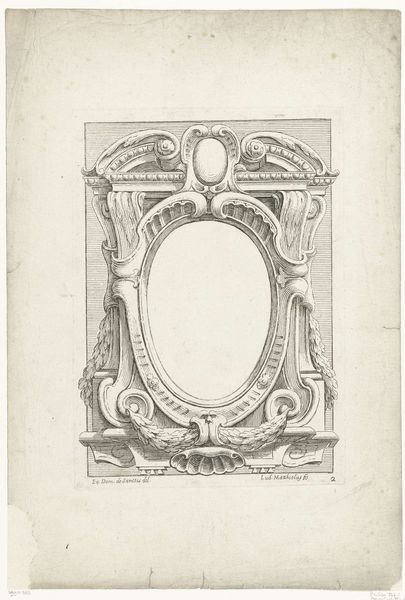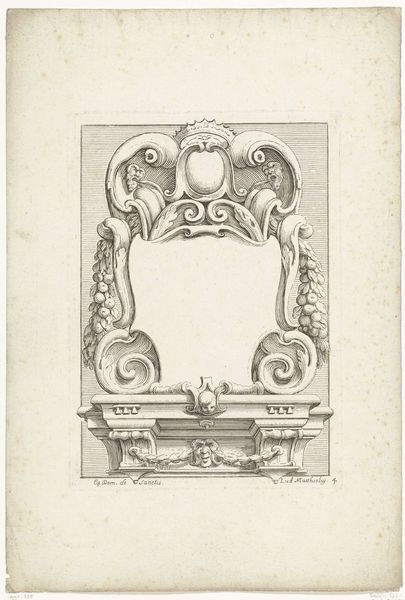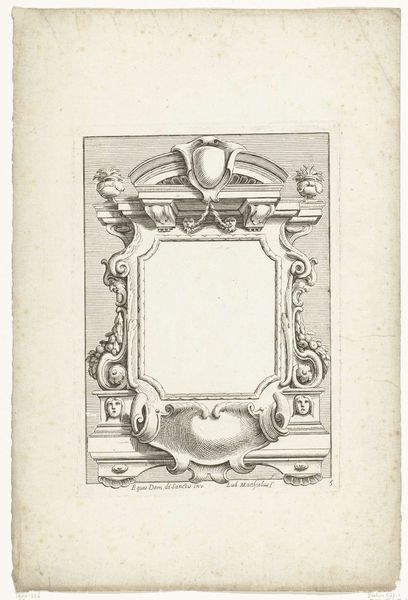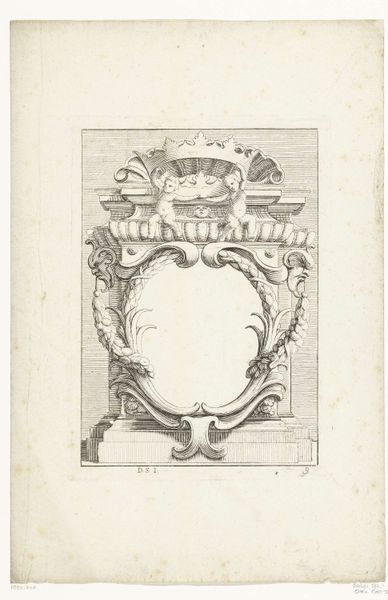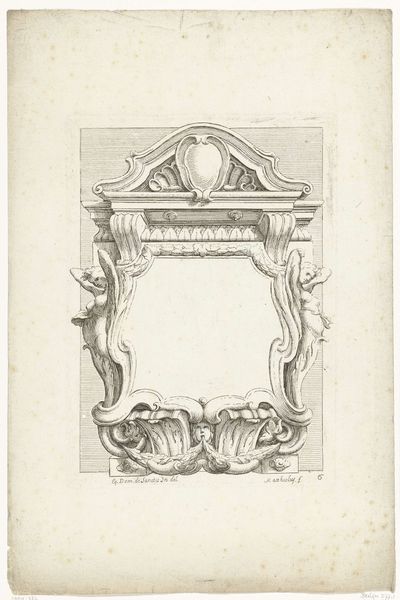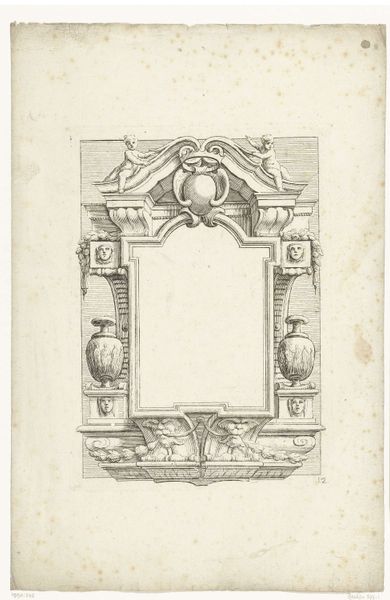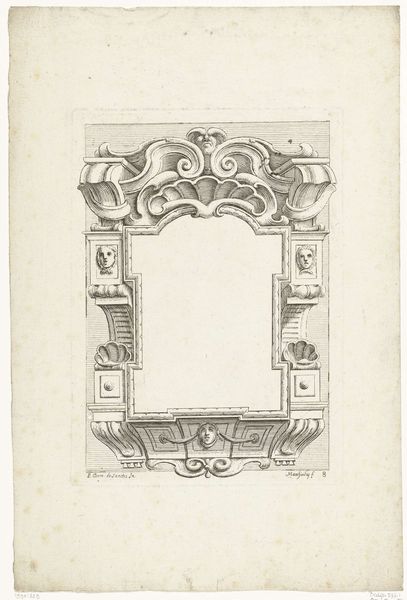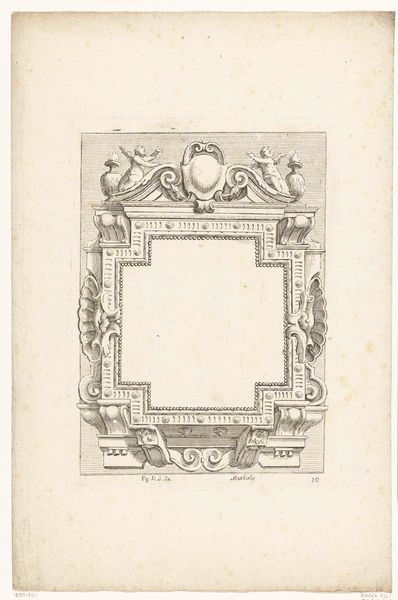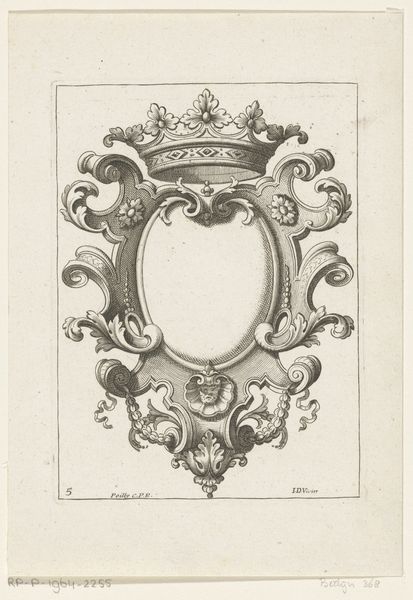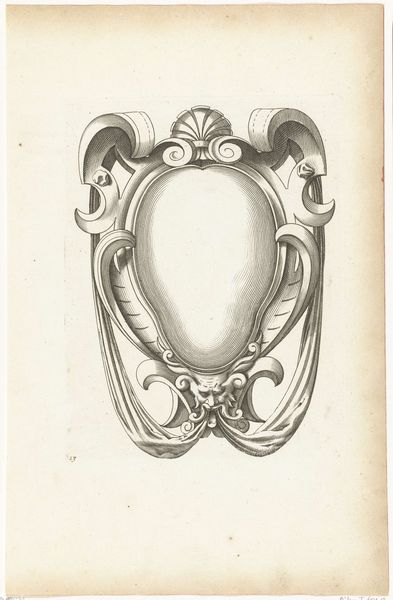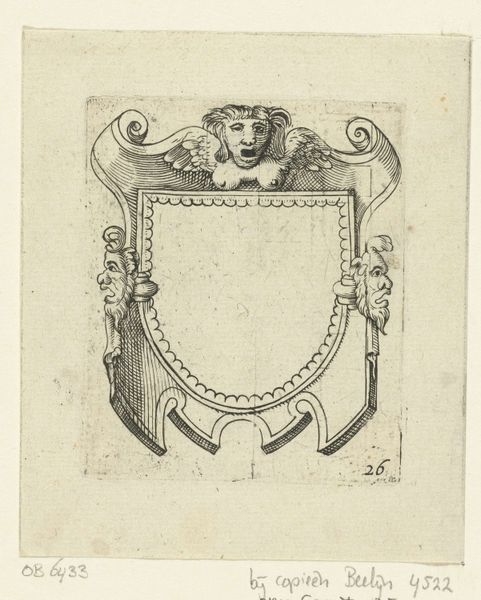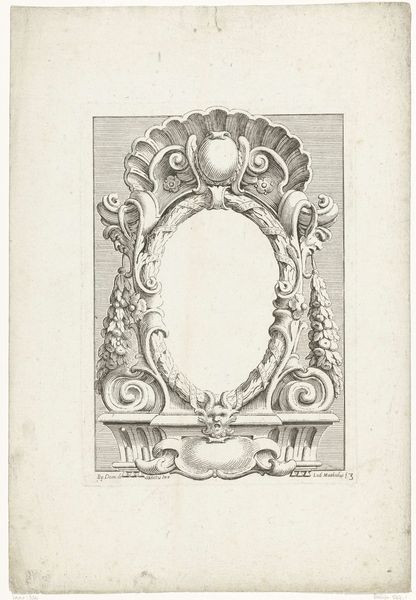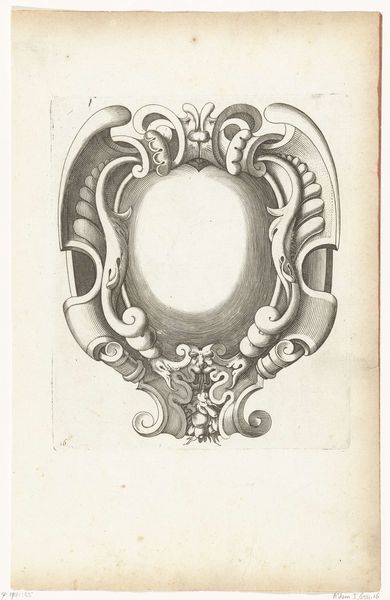
ornament, metal, engraving
#
ornament
#
baroque
#
metal
#
pen sketch
#
old engraving style
#
form
#
line
#
decorative-art
#
engraving
Dimensions: height 241 mm, width 173 mm
Copyright: Rijks Museum: Open Domain
Curator: This is "Cartouche in de vorm van een schild", a metal engraving by Lodovico Mattioli, created sometime between 1670 and 1680. Editor: What a fascinating find! It feels immediately grand, even imposing. The symmetry, the crown… there's an aura of power, though it's somewhat undermined by the emptiness of the shield at the center. Curator: Absolutely. Let's consider the method: the etching itself is meticulously executed, indicative of skilled labor and an engraver deeply versed in ornamentation. Each flourish must have demanded countless hours, revealing a network of workshops churning out such images during this period. This isn't just 'art'; it's a testament to the crafts and the economies that flourished during the baroque era. Editor: For me, it's all about the visual language it employs. Look at that cartouche, the cherubic figure above it… there's such a clear message about authority and heritage being conveyed. It makes you wonder about the psychological impact of displaying these symbols so openly. Were these symbols aimed at reassurance, or were they intimidating to certain members of society? Curator: It's compelling how this piece allows us to delve into those issues. While your focus is on the grand narrative conveyed by symbols, I am looking at the social narrative behind its crafting. The level of detail suggests it wasn't just a simple production but was born from a well-oiled production system – maybe it was an artisan benefiting from court patronage, given the opulent style? Editor: It almost serves as a snapshot of values – Baroque splendor colliding with that need to showcase power and belonging. Think about the tradition of coats of arms! It really drives home how visual communication has always helped mold group and self-identity. Curator: And by examining Mattioli's labor in its material existence – the tooling marks, paper quality and ink formulas – it also encourages dialogue around the social status and potential political associations linked to engraving such imagery back then. Editor: True! Together, the combination makes one potent image. It shows an interesting crossroads of craft, artistry, and socio-psychological symbols all within this single "Cartouche." Curator: Indeed. We often separate "art" from its process, yet through exploring the means of creation, these ornamental images open exciting doors into otherwise forgotten historical circumstances.
Comments
No comments
Be the first to comment and join the conversation on the ultimate creative platform.
